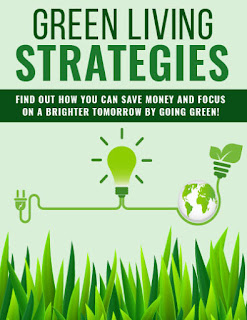10 Tips How To Looking For Green Living Strategy.
Find Out How you can save money And Focus On A Brighter Tomorrow By Going Green.
If you’re looking for easy ways to go green and help to not only save our planet but reduce your monthly costs and living expenses, then you’ll want to read every word in this special report.
From what you can recycle, to choosing your energy source, we make it simple to decrease your carbon footprint and focus on a better future.
All it takes is some careful and strategic planning, making some small but important changes to your daily life, and you’ll be on the path towards living a greener life.
Tip #1: Use LED Lightbulbs
One of the first places you can start to go green is by switching out your current lightbulbs for LED ones. There have been some debates on what type of lightbulb is the best for the environment, and the clear choice is LED.
When you use fluorescent and incandescent lightbulbs, it takes a significant amount of energy just to produce a little bit of light. LED lightbulbs, on the other hand, are approximately 80% more efficient.
Tip #2: Switch to Green Power
When it comes to supplying energy to your home, you may have the option to choose a more environmentally-friendly source. All it takes is a quick phone call to your electric company to see if they offer green power.
Right now, your energy source might be coming from something that’s harmful to the environment.
There are three types of energy sources: those that are the least beneficial to the environment, those that are better and renewable, and those that are considered the best.
Green power is energy that comes from the following types of sources:
1. Small scale hydropower
2. Solar
3. Wind
4. Geothermal
5. Biomass
Tip #3: Use Cloth Diapers
Disposable diapers are incredibly harmful to the environment. It takes approximately 500 years just for one diaper to decompose, and that’s only if it’s exposed to enough sunlight and oxygen!
Switching to cloth diapers can help alleviate this impact on the environment.
Tip #4: Harvest Rainwater
Collecting the rainwater not only helps the environment, but it’ll save you money.
By collecting water, you’re also able to educate your household members about how much water they use. Everyone can be part of the process of collecting and redistributing it among your household. This might make them think twice about their usage.
Tip #5: Recycle Batteries
When we want to get rid of stuff that we no longer need, our first thought might be to just throw it away. Even something as common as batteries often end up in the trash, which is not where they belong.
Along with everything else that ends up in a landfill, batteries need to break down and decompose. As they do so, however, they release harmful chemicals that end up in the soil. On average, it takes about 100 years for a battery to decompose in a landfill.
Tip #6: Composting
By composting food scraps and yard waste, it prevents them from taking up space in landfills where they release methane gas.
Methane is a gas that can cause significant damage to the environment, since it naturally absorbs heat from the sun and therefore contributes to global warming.
Tip #7: Donate And Buy Used Clothes
When we clean out our closet, we can feel a bit overwhelmed and have the urge to just throw it all in the garbage. Instead of contributing to your local landfill the next time you do this, make a pile that can be worn by someone else instead of just throwing them away.
Tip #8: Telecommute or Carpool
A great way to go green is to use automobiles less, and there are several ways to make this change. If you work outside of the home but think you could do it remotely, then it might be time to sit down with your supervisor.
Tip #9: Indoor Plants
Filling your home with just a few indoor plants can drastically improve the air quality. Even homes without a lot of direct sunlight can sustain some basic plants.
Indoor plants can drastically reduce carbon dioxide levels by absorbing it. In addition to having better quality air, they can help keep your home clean.
Tip #10: Reuse Containers
A good household can always use extra storage. If you’re in need of extra containers but also want to save the environment, then you might benefit from reusing food containers.
Items such as coffee canisters are perfect for keeping nuts, bolts, screws, and other types of fix-it tools. Designate a canister for each item, and then label it with masking tape and a marker.
Conclusion
As you can see, it doesn’t take a whole lot of effort to have a big impact on the environment. It all comes down to choices.












0 Response to "10 Tips How To Looking For Green Living Strategy"
Posting Komentar